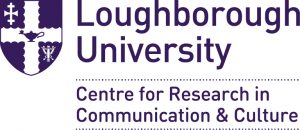
Prof Susan Banducci
Ph.D. (University of California, Santa Barbara). Research interests are in the areas of comparative political behaviour, media and political communication.
Email: s.a.banducci@exeter.ac.uk

Prof Dan Stevens
Main interests are in mass political behaviour in the United States and Britain. Looks at the major influences on political attitudes and behaviour, such as the economy, political advertising, and the news media.
Email: D.P.Stevens@exeter.ac.uk

Section 2: Politics
- Rhetoric of excess
- Destroying and building democracy, a German view
- Remembrance of Referendums Past: Scotland in the campaign
- Public personalities in the EU debate: elites vs. the majority and Bullingdon resurgent
- Healthier ever after? The NHS as a campaign issue
- Wales, immigration, news media and Brexit
- The referendum campaign and the public’s constitutional understanding
- The EU referendum and the Country of Origin principle (COO)
- Calming the storm: fighting falsehoods, fig leaves and fairy tales
Clearly, it seems, voters were not motivated by accuracy – and perhaps they were not encouraged to be so by a media that treated all claims as equivalent.
The campaign was not devoid of data and evidence regarding the impact of continued membership or an exit on the economy, immigration, services such as the NHS and the balance of EU vs. national powers. But data and evidence are different from factual claims. There were many types of claims made by the Leave and Remain camps during the campaign. First, there were arguments that reflected fundamental values and revealed differences in visions for the UK. These were about regaining sovereignty or maintaining a shared destiny and security within Europe. A second type of claim rested on dystopian visions of remaining (unbridled immigration for the Leave side) or leaving (economic devastation by the Remain side). These visions of the future are based on modelling and assumptions about future trends – media reporting on these predictions was sometimes lacking in that the assumptions were not detailed, the source of the prediction not identified or the claims dismissed as too complex rather than an attempt made to explain to voters. The assumptions and sources can give important clues as to the slant or possible bias in the figures. The media tended to treat these claims as equally credible regardless of how questionable assumptions or consensus predictions about the impact on the economy by the IFS and economists. However, there is a third, and potentially more malicious, if misused, category of claims. These are factual claims about current conditions.
In this latter category, one of the most well recognised ‘facts’ in the campaign was that the UK sends £350 million to the EU each week. In a reply to MP Norman Lamb’s query about the figure, the UK Statistics Authority indicated that the use of the £350 million figure along with the suggestion this money could be spent elsewhere was ‘potentially misleading’. There were a number of websites providing fact checking of claims made by each side. Fullfact.org published lengthy explanations on the UK’s EU membership fee and immigration. Even though still a net contributor, FullFact shows the true cost of membership after rebates and EU contributions to the UK and explains that the costs and benefits of membership should be distinguished from the membership fee. Andrew Dilnot, the UK’s Statistics Authority, was so concerned about the misuse of this figure that he issued an additional statement on 27 May writing that the continued use of the figure is “misleading and undermines trust in official statistics.”
Why would voters opt to ignore these corrections to misleading information? Psychologically, there are many heuristics or biases that lead to selective engagement with information and outright resistance of facts that may run counter to one’s beliefs. The ‘motivated reasoning’ paradigm and a confirmation bias suggests that citizens will tend to resist information that is inconsistent with prior beliefs and values and seek out information that confirms them (Kunda, 1990). Therefore, we might assume that those who were supporters of the Leave campaign and who wished to redirect funds from EU membership to social services in the UK avoided processing the corrections to the misleading figure. Indeed, resisting fact checked claims may have happened across a range of issues where statements were found to be misleading such as on the impact of immigration. In a survey conducted by ICM Unlimited, we asked 449 respondents in an online panel whether they had heard the claim “The UK contributes £350 million a week to the EU” and over 75% reported that they had heard the claim many times. Of those who had heard the claim, half had heard or read materials to suggest the claim was false. However, despite hearing that the claim was false there was resistance to processing the claim as factually incorrect. Amongst Leave supporters who had heard the claim was false almost 50% rated the claim as strongly or mostly believable. On the other hand, amongst Remain supporters only 11% rated the claim as strongly or mostly believable. Given biases in the processing of information in any referendum situation it may be difficult to sway voters with facts. Clearly, it seems, voters were not motivated by accuracy – and perhaps they were not encouraged to be so by a media that treated all claims as equivalent.
This data reported in the article was partly supported by the Economic and Social Research Council ES/N012283/1. We acknowledge the contributions of Travis Coan, Hywel Williams, Lorien Jasny, Gabriel Katz, Iulia Cioroianu and ICM Unlimited in the production of the research reported.


